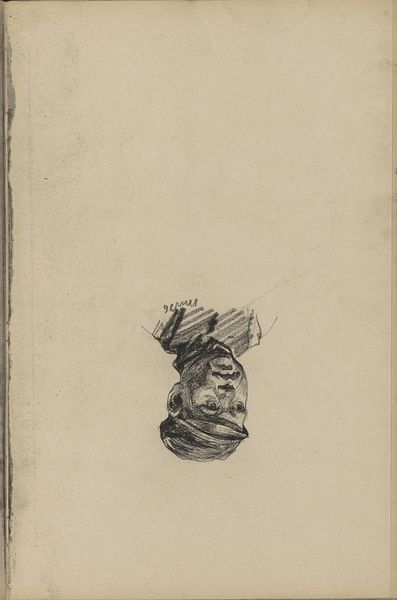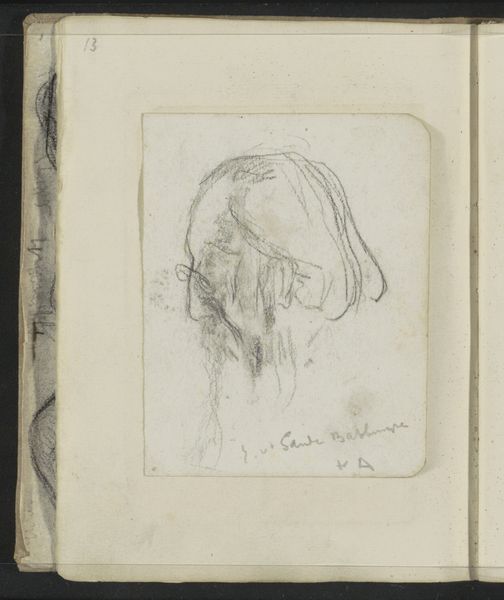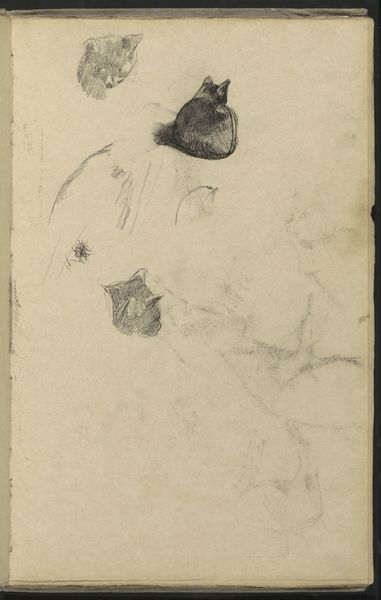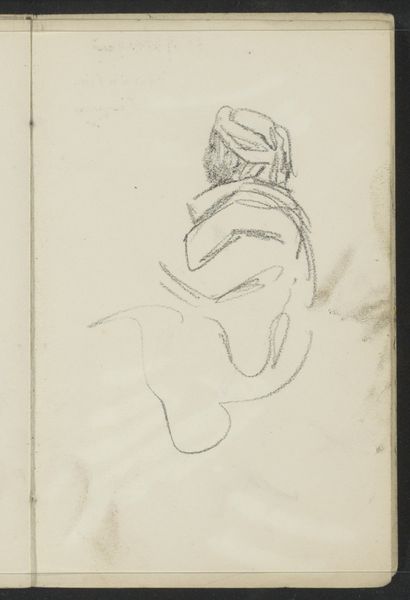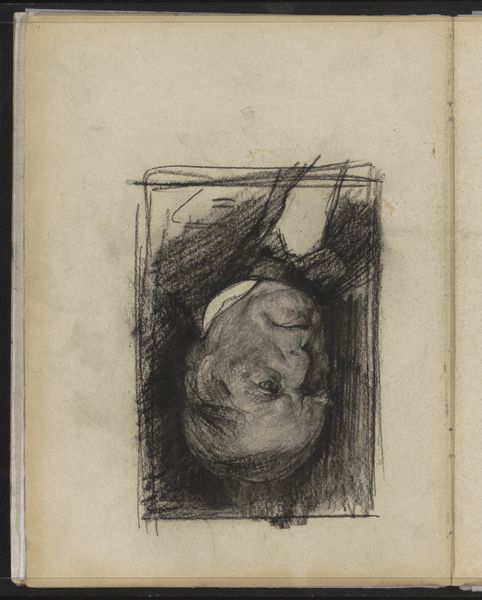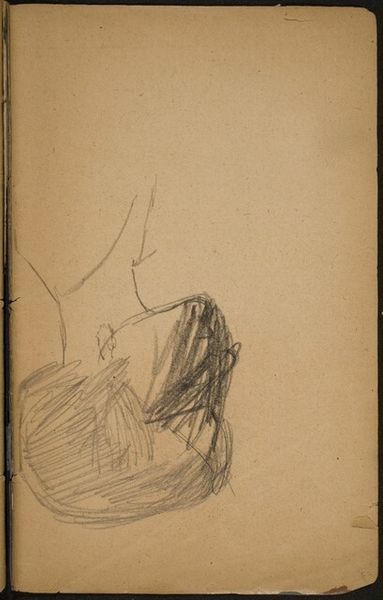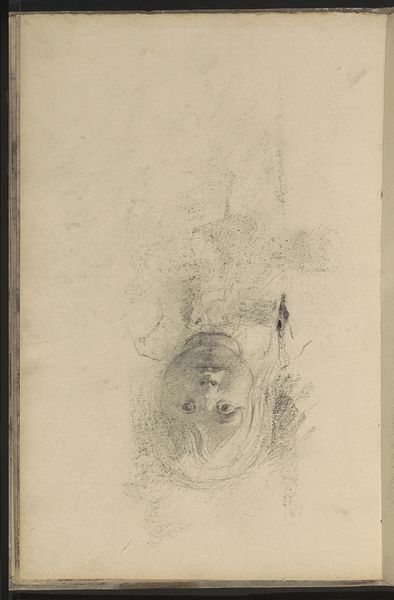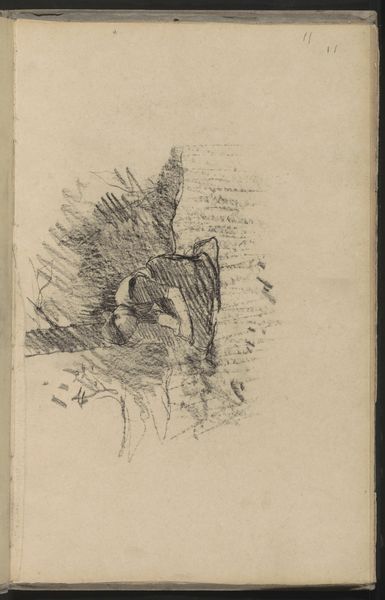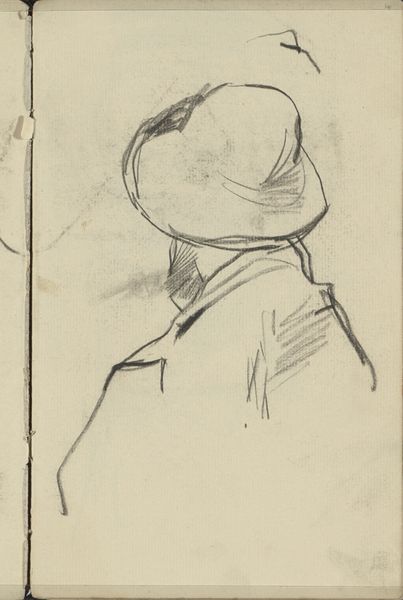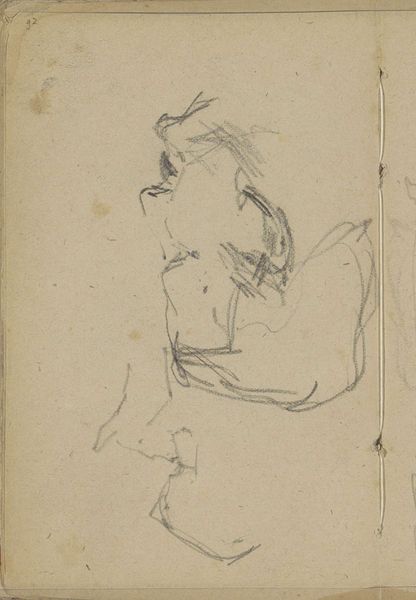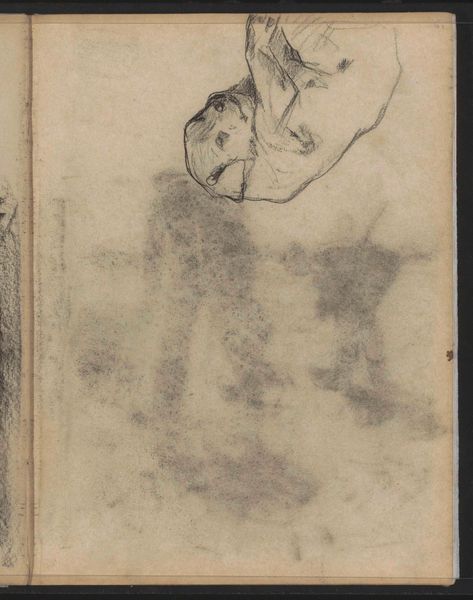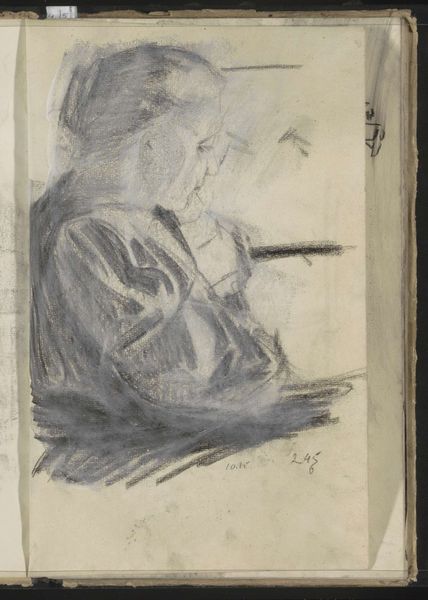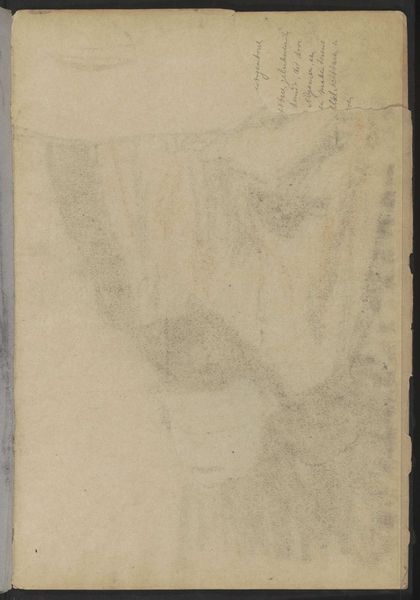
drawing, paper, graphite
#
portrait
#
drawing
#
impressionism
#
paper
#
graphite
Copyright: Rijks Museum: Open Domain
Curator: Willem Witsen created this evocative study, simply titled "Hoofd," which translates to "Head," sometime between 1887 and 1891. The artwork consists of graphite on paper. It’s currently held in the collection of the Rijksmuseum. Editor: My initial reaction is a sense of incompleteness, like a fragment of thought or memory. The dark, smudged graphite against the aged paper evokes a feeling of quiet melancholy, perhaps even a commentary on the transient nature of existence. Curator: Precisely! And consider Witsen's practice: He moved within artistic circles known for their radical ideas regarding the role of the artist in society. His process often involved rapid sketching, capturing fleeting moments, impressions...This lends the drawing its raw, almost visceral quality, doesn't it? Editor: Absolutely. The impressionistic style underscores that sense of immediacy. How might Witsen's social context influence the portrayal of this subject, particularly during a period of significant social and political upheaval in Europe? I am curious about the absence of any definitive identifying marks on the portrayed subject and what that may have meant in those turbulent years. Curator: It’s interesting you mention that because graphite, while easily accessible, has its own limitations. The texture of the paper would interact directly with the application of graphite, impacting how details were rendered and perceived. Perhaps these very limitations played a role in its ambiguity, allowing viewers to interpret its form subjectively. Editor: Yes, and that very accessibility opens up discussions about class and artistic training during this era. Who was being represented and who was doing the representing? Witsen came from an upper-class background, and how might his privilege inform his representation of the figure. Does the work subtly reflect or challenge the era's power dynamics? Curator: It does complicate things. This wasn’t necessarily intended as a finished portrait in the conventional sense. It has more to do with documenting the process of seeing, thinking, and making and more to do with the artist’s engagement with the materials. Editor: And that pushes me to reconsider. By emphasizing process and deconstructing traditional portraiture, could the artwork resist societal expectations around identity and representation? The elusiveness we observe might in itself become a statement—an assertion that representation doesn't require definitive categorizations. Curator: An important perspective that illuminates both the art object and the means of its creation within the artist's life and beyond! Editor: Yes, I think analyzing the portrait through a social-historical framework provides new possibilities for interpreting a work we may initially consider as an intimate study of process.
Comments
No comments
Be the first to comment and join the conversation on the ultimate creative platform.
